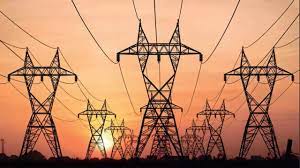
STATE ENERGY EFFICIENCY INDEX 2021-22
STATE ENERGY EFFICIENCY INDEX 2021-22 I RACE IAS : Best IAS Coaching in Lucknow I Current Affairs
Why in News:
- Recently, the Ministry of New and Renewable Energy released the State Energy Efficiency Index (SEEI) 2021-22 report.
Key points related to the report:
State Energy Efficiency Index :
- The index was developed in collaboration with the Alliance for an Energy-Efficient Economy (EEE) and the Bureau of Energy Efficiency (BEE).
- This index is a contemporary framework of 50 indicators in line with national priorities in the year 2021-22.
- Program-specific indicators have been included this year to monitor the outcomes and impacts of state-level energy efficiency initiatives.
- The index measures 36 states and union territories on their energy efficiency progress.
- States have been classified as 'Front Runner', 'Achiever', 'Contender' and 'Aspirant', based on their efforts and achievements.
Objective:
- To help states identify areas for improvement, learn from best practices and adopt an economy-friendly approach to energy efficiency implementation.
- By prioritizing energy efficiency, it aims to drive carbon reduction efforts and achieve a more sustainable future.
- The index is designed to help monitor progress toward state goals for energy savings and emissions reductions.
Highlights of State Energy Efficiency Index 2021-22:
- Andhra Pradesh, Karnataka, Kerala, Rajasthan and Telangana are among the top ranked states in State Energy Efficiency Index-SEI.
- Four states Assam, Haryana, Maharashtra and Punjab are in the achiever category with scores between 50 and 60.
- Besides, Karnataka, Andhra Pradesh, Assam and Chandigarh are the top performing states in their respective state groups.
- Telangana and Andhra Pradesh have registered maximum improvements since the last index.
Significance of this index:
- The index improves data collection, enables cross-state collaboration and develops energy efficiency program ideas.
- It helps states identify areas for improvement, learn from best practices and adopt an economy-friendly approach to energy efficiency implementation.
- By prioritizing energy efficiency, it aims to drive carbon reduction efforts and achieve a more sustainable future.
Major recommendations of the report:
- The index is designed to help monitor progress toward state goals related to energy savings and emissions reductions.
- The Index outlines the following recommendations to help states drive energy efficiency transitions that will contribute to meeting the Sustainable Development Goals (SDGs) and Nationally Determined Contributions (NDCs)
- Enabling financial support for energy efficiency in focus areas.
- To develop institutional capacity in States and UTs to address emerging needs and challenges in energy efficiency implementation.
- Enhancing collaboration among financial institutions, energy service companies and energy professionals in large scale energy efficiency implementation in states.
- Mainstreaming energy data reporting and monitoring for all sectors.
About Bureau of Energy Efficiency:
- The Bureau of Energy Efficiency (BEE) was established on 1 March 2002 under the provisions of the Energy Conservation Act, 2001 by the Government of India.
- It aims to assist in developing policies and strategies with emphasis on self-regulation and market principles under the provisions of the Energy Conservation Act, 2001.
- To fulfill the functions assigned under the Energy Conservation Act, the Bureau of Energy Efficiency coordinates with designated consumers, designated agencies and other organizations and identifies, accredits and utilizes existing resources and infrastructure .
- It also performs regulatory and promotional functions under the Energy Conservation Act, 2001.
Conclusion :
- As India has made a commitment to achieve the Nationally Determined Contribution (NDC) targets and move towards a net-zero economy by 2070. There is, therefore, a special need for cooperation between the central and state governments, judicious resource allocation, policy alignment and regular monitoring of progress.
- The State Energy Efficiency Index monitors the progress of states and India in managing their energy footprint and operating energy efficiency policies and programs at the state and local levels.